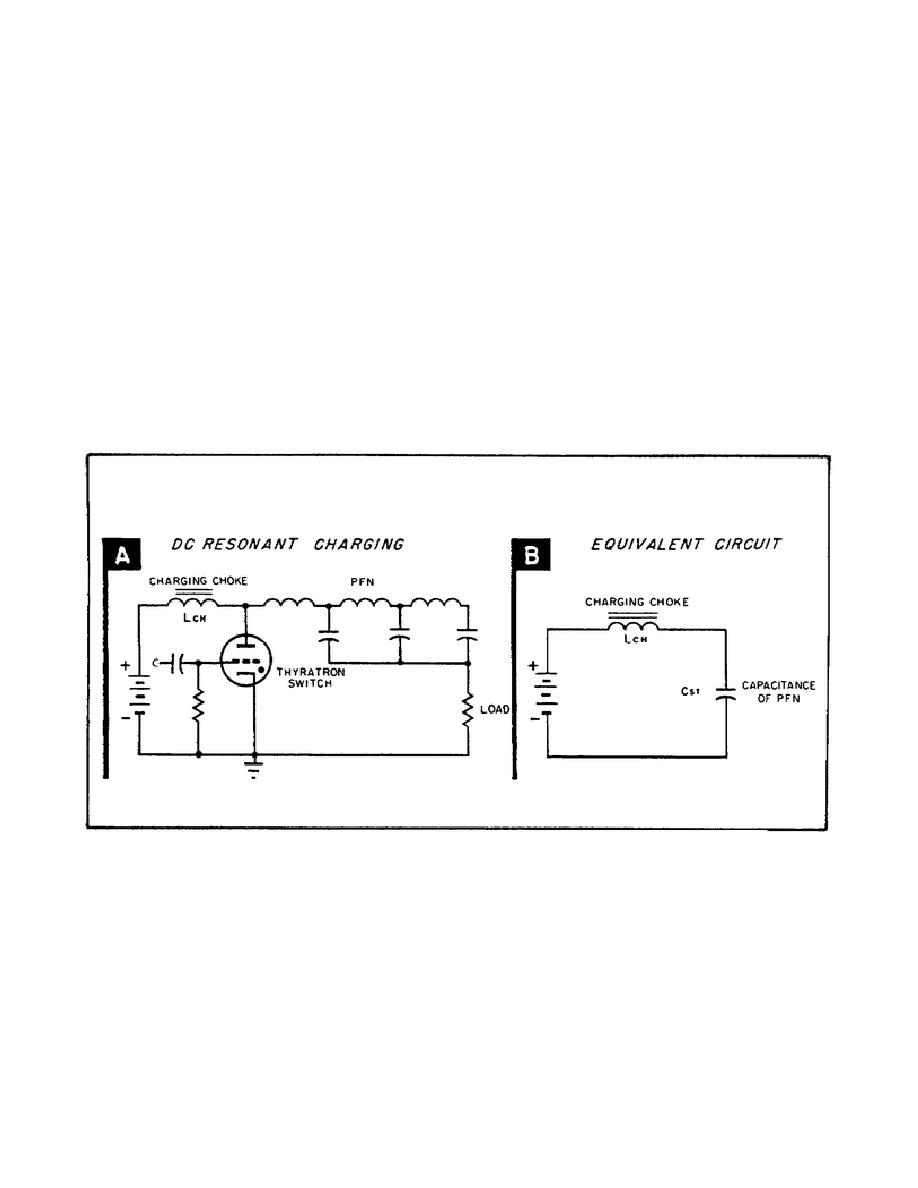
b. A simpler and highly efficient method uses an inductor as a charging
This method, called DC resonant charging, allows the PFN to
charge to a voltage nearly double that of the power supply. Thus, with a
source voltage of 6,000 volts, the PFN can charge to 12,000 volts.
The
extra 6,000 volts is supplied by the inductor. When the PFN discharges now,
it develops a 6,000-volt pulse across the load.
2.
DC resonant charging circuit.
a. Part A of Figure 59 shows a simplified DC resonant charging circuit.
Notice the charging inductance, Lch, called a charging choke, in series with
the DC source voltage and the PFN.
The reason the circuit is called DC
resonant charging is that, first of all, the PFN is charged by a DC source
and, second, the inductance of the choke, Lch, resonates with the
capacitance of the PFN.
The equivalent circuit of this simple series
resonant circuit is shown in Part B of Figure 59.
In the equivalent
circuit, the PFN is represented by a single storage capacitor, Cst.
The
inductance of the load (pulse transformer and magnetron) can be neglected
because its effect is small compared to that of the choke, Lch.
Figure 59.
The DC Resonant Charging Circuit.
b. The equivalent circuit is used in Figure 60 to simplify the
explanation of the DC resonant charging circuit.
Keep in mind that Cst
represents the capacitance of the pulse-forming network.
You will learn
about the charging cycle
74



 Previous Page
Previous Page
